2025 Can-Am Defender Buyer’s Guide
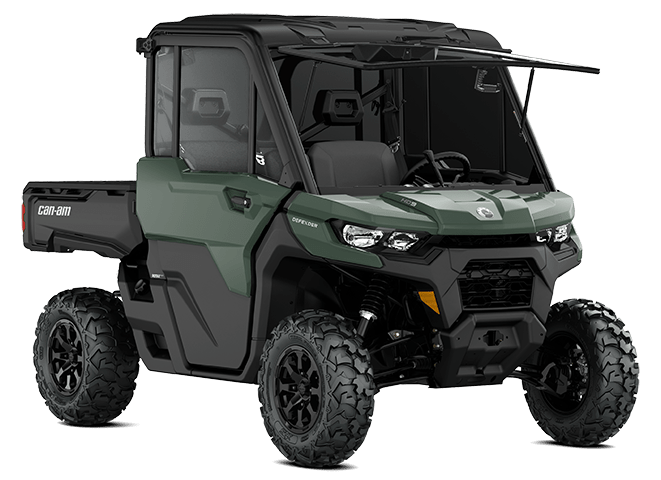
$12,899 MSRP / 52 HP
• fun + versatile utility
• trims from “tractor” to “gucci”
• solid alternative to ranger ranger 1000
Work and play and clever details.
If the Polaris Ranger is the Ford F-150 of utility side-by-sides, then the Defender is the market’s Chevy Silverado. Each machine was designed to be at home in work or play. And combined, the pair has such a clamp on market share that the competition has trailed far behind for years.
The current Defender is one of Can-Am’s best efforts. Like the Ranger, it hits a critical blend of price, capability, and durability. Also like the Ranger, the Defender’s trim spectrum qualifies as a game of Choose Your Own Adventure.
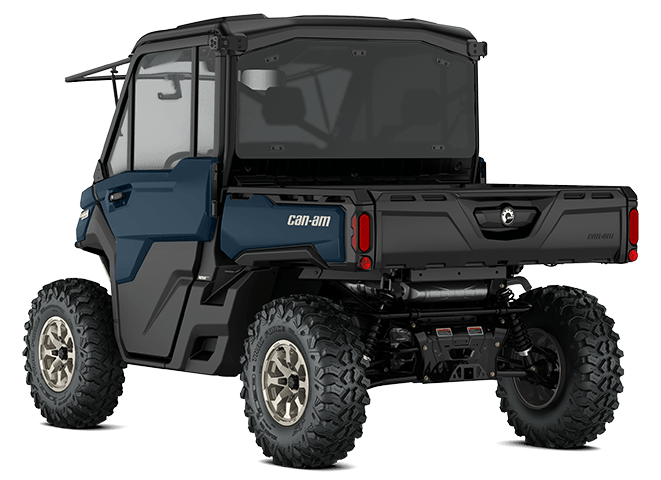
One one end of the scale, you can spend less than $13,000 and get a bare-bones, 52-hp, no-doors, manual-steering farm mule less comfy than a city bus. At the other extreme lives an 82-hp version of the same machine, complete with a sealed cab, electronic power steering, a flip-up windshield, automatic HVAC, and a laundry list of other perks.
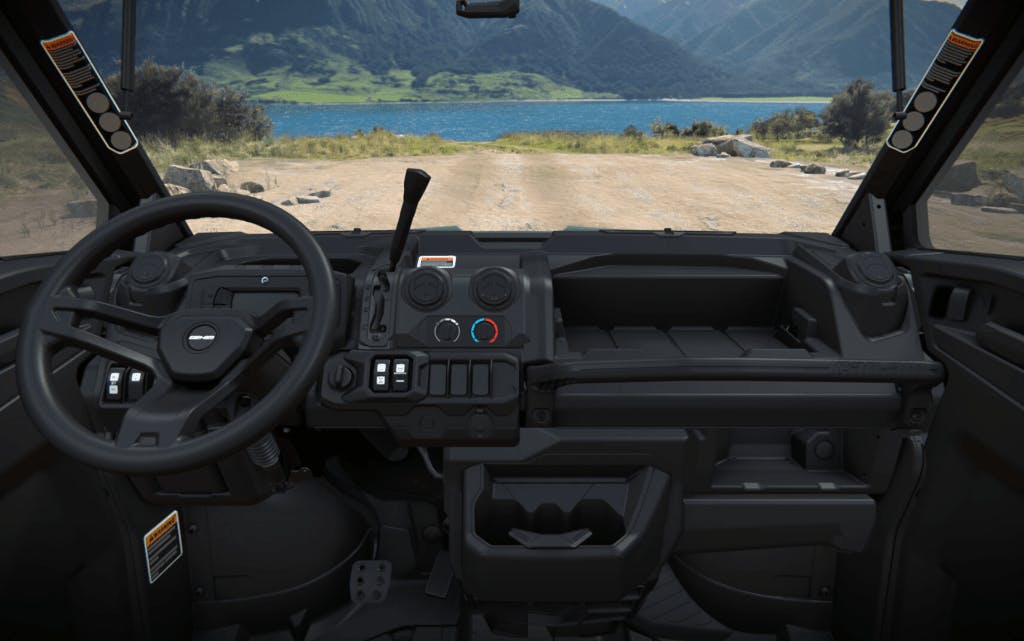
How much power does it make?
The Defender line offers two basic engines in three states of tune. All are fuel-injected.
The smallest of the two engines, a Rotax ACE single that Can-Am calls HD7, displaces 925 cc. It produces 52 hp and 42 lb-ft of torque and is available in most Defender models. The larger engine, a 976-cc Rotax V-twin, offers a significant bump in output. It’s optional on some Defender trims and standard on others and available in two states of tune—HD9 and HD10.
In HD9 spec, the twin produces 65 hp and 59 lb-ft. of torque. In HD10 tune, it’s good for 82 hp and 69 lb-ft.
Neither the V-twin nor the single are unique to the Defender line—they’re simply tweaked versions of powerplants found in other Can-Am models. And while either engine is more than enough to nail the Defender’s work brief, the V-twin is the clear winner. For one thing, it brings a noticeable bump in torque over the single. Just as important, it’s smoother and quieter, with none of the single’s thrashy noise and vibration under load.
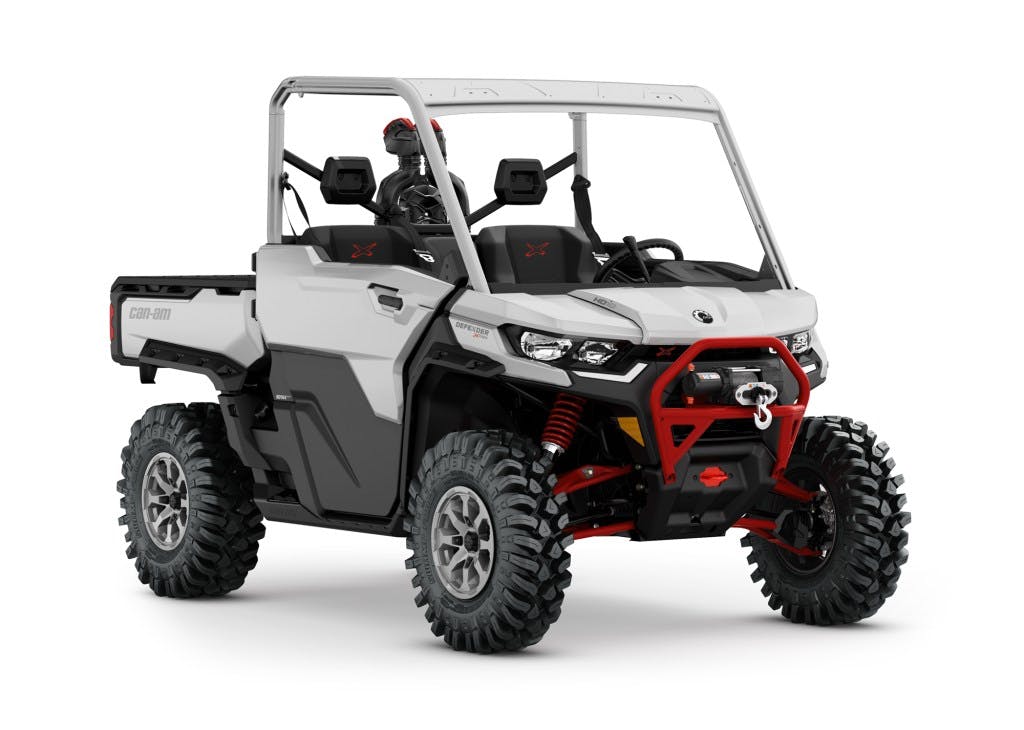
What makes it special?
This is a tried-and-true platform, tough as snot. Trust us—we’ve spent years trying to kill Defenders in the line of testing, and we haven’t beaten one yet.
You get industry-standard features like a selectable turf mode—the option to unlock the Defender’s rear differential to avoid tearing up delicate terrain. But the Defender also features tricks like a dedicated work-mode speed limiter—handy if you’ve got kids or coworkers who need to be reined in at the wheel.
Another neat addition: If the Defender’s driveline computer detects slippage from the transmission’s drive belt, it will automatically limit power to keep the driver from killing the belt and stranding the rig.
That last feature can also be helpful if your machine is regularly operated by a variety of folks with little experience driving side-by-sides. It’s particularly useful during towing, where heavy feet and heavy trailers can shock-load a CVT belt into early failure.
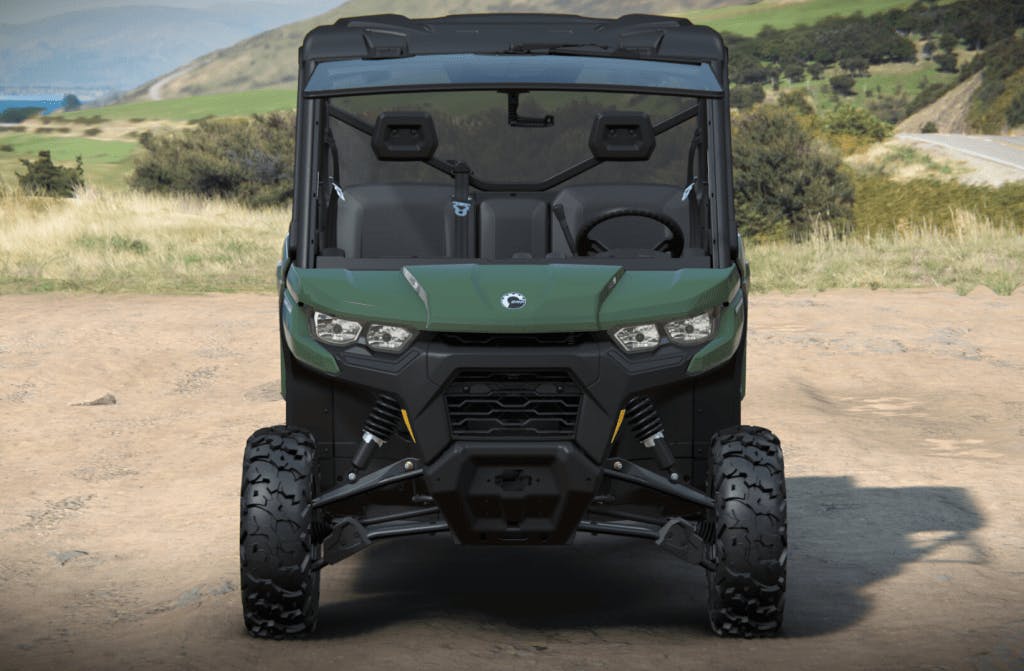
Why do I want it?
You need a top-shelf work machine that can double as weekend fun-haver. You tried a Kawasaki Mule or a John Deere Gator once and fell asleep. (Amazing machines, both of them, but they’re tools, first and foremost.) Or maybe… you’d buy a Polaris Ranger, but your daddy wasn’t a Polaris man, and your granddaddy wasn’t a Polaris man—and you’re sure as hell not gonna start now.
Why don’t I want it?
Price: Options add up here, and a fancy Defender (HVAC, sealed cab, power steering, etc.) brings a fancy sticker. The Ranger is no different in that sense, so if you’re on a budget, either give up the bells and whistles or narrow your search to more focused work machines.
Unnecessary Functionality: If you’re just looking for a farm tool, the market holds a raft of less expensive machines with equal capability.
You’d buy a Can-Am Defender, but your daddy wasn’t a Can-Am man, and your granddaddy wasn’t a… you get the point.
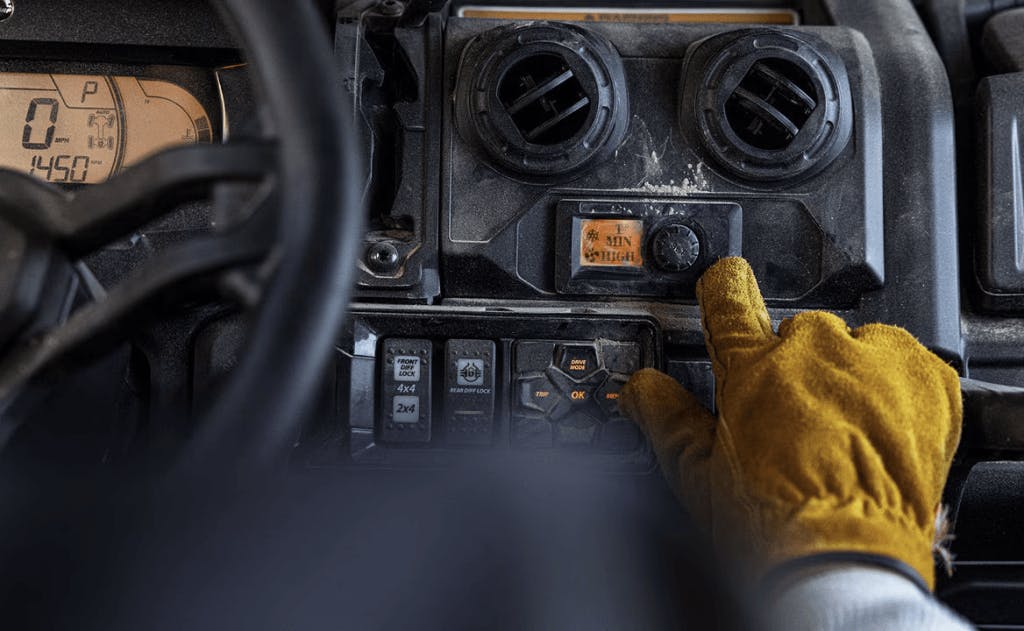
Which trim do I want?
If you don’t count engine variations, the two-door Defender is offered in six basic trims. It’s available in seven trims if you count the Defender X MR with Half Doors, which we don’t, because it’s basically an X MR, the “Mud Ready” Defender, with—you guessed it—two half doors.
Each of those six basic feature levels brings a different mix of power, functionality, and comfort, so it pays to read the spec sheets before you go shopping. The range starts with the base Defender ($12,899), with its open cab and steel wheels, and it ends at the full-Gucci Defender Limited ($30,199), with its sealed cab, HVAC, flip-up windshield, and more.
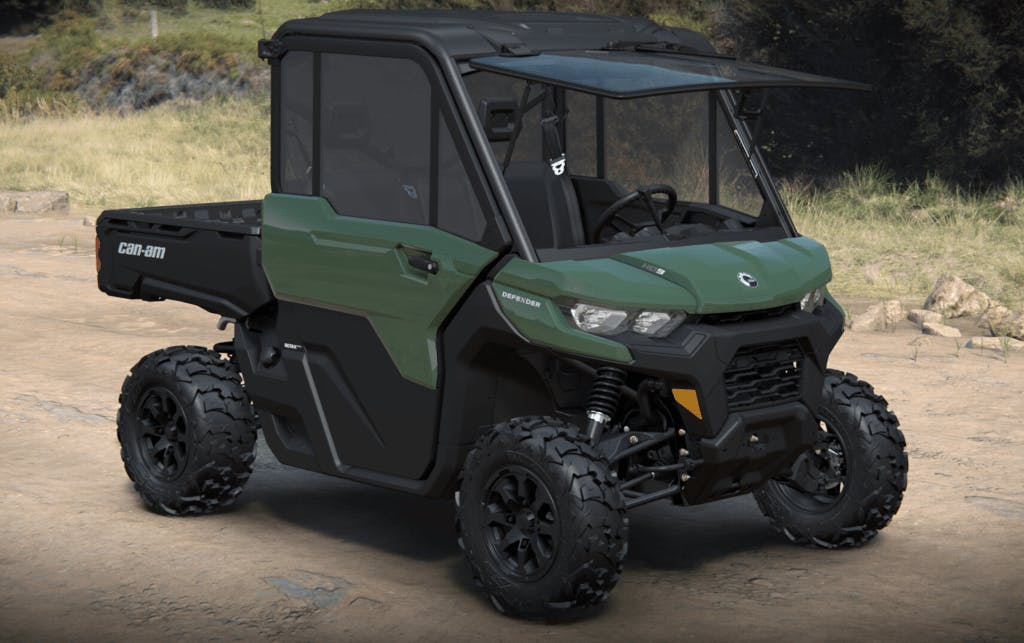
If you don’t need the comforts of a sealed cab, we’d stick with the Defender DPS HD10 ($19,099). At that price, you get the 82-horse V-twin, which you won’t regret having. The HD7 and HD9 engines are fine for farm use, but the 10’s extra grunt comes in handy when towing or climbing hills with a load.
The DPS in the model’s name stands for Dynamic Power Steering, a.k.a. Can-Am’s electronic steering-assist setup. The system is a genuinely great addition to any Can-Am, offering good feel and feedback and just the right amount of assist for a long day.
If I like this… what else should I look at?
Check out the Honda Pioneer 1000, the Polaris Ranger 1000, and the Kawasaki Ridge.
2025 Can-Am Defender Specs
NOTE: Four-door versions of the Can-Am Defender are sold as the Defender Max.This buyer’s guide refers only to the two-door version.
Length: 121 in. / 125 in. (XT) / 126 in. (LTD) / 129.4 in. (X MR)
Width: 62 in. (HD7, HD9) / 64 in. (HD10, X MR) / 65 in. (DPS Cab, LTD)
Height: 76 in. (DPS HD7, DPS HD9) / 78 in. (DPS HD10, XT HD7, XT HD9) / 80 in. (DPS Cab) / 81 in. (LTD) / 82 in. (X MR)
Wheelbase: 83 in.
Claimed Curb Weight: 1456 lb. (HD7) / 1479 lb. (HD9) / 1471 lb. (DPS HD7) / 1541 lb. (DPS HD9) / 1558 lb. (DPS HD10) / 1577 lb. (XT HD7) / 1606 lb. (XT HD9) / 1623 lb. (XT HD10) / 1830 lb. (DPS Cab) / 1976 lb. (LTD) / 1746 lb. (X MR)
Engine: Rotax ACE single (HD7) / Rotax V-twin (HD9, HD10)
Displacement: 925 cc (HD7) / 976 cc (HD9, HD10)
Transmission: CVT with park, reverse, neutral, low, high; electronic drive-belt protection and engine braking (HD7) / CVT with park, reverse, neutral, extra-low, high; electronic drive-belt protection, engine braking, and additional cooling (HD10)
Claimed Power: 52 hp (HD7) / 65 hp (HD9) / 82 hp (HD10)
Claimed Torque: 42 lb-ft. (HD7) / 59 lb-ft. (HD9) / 69 lb-ft. (HD10)
Fuel System: EFI
Steering: Manual / Electric Power Steering (DPS)
Drivetrain: Selectable turf mode/2WD/4WD w/ Visco-Lok auto-locking front differential
Front Suspension: Dual A-arms w/twin-tube gas-charged shocks; 10 in. travel
Rear Suspension: Torsional trailing arm w/ external sway bar, twin-tube gas-charged shocks; 10 in. travel
Front Brakes: 220-mm hydraulic discs w/ 2-piston calipers
Rear Brakes: 220-mm hydraulic discs w/1-piston calipers
Wheels F/R: Cast aluminum; 11×14 in.
Tires F/R: XPS Trail Force 27×9 (base, DPS Cab, DPS HD7, DPS HD9, XT HD7, XT HD9); XPS Trail King 27×9 (DPS HD10, XT HD10); XPS Trac Force 30×9 (LTD); XPS Swamp Force 30×9 (X MR)
Bed Capacity: 1000 lb. (600 lb. for California models)
Towing Capacity: 2500 lb.
Seating Capacity: 3
Ground Clearance: 11 in. (base, DPS HD7, DPS HD9, XT HD7, XT HD9) / 13 in. (DPS HD10, XT HD10) / 13 in. (DPS Cab) / 14 in. (LTD) / 15 in. (X MR)
Fuel Capacity: 10.6 gal.
